Can You Bowl With Torn Rotator Cuff? How to Prevent Shoulders
Learn whether it's possible to bowl with a torn rotator cuff in this comprehensive guide. Find out about the symptoms of a torn rotator cuff, how it can affect your bowling game, and how to minimize the risk of further injury.
A torn rotator cuff is one of the most common problems in the United States, affecting athletes and non-athletes. In fact, according to research, about three million people have a rotator cuff tear.
If you've recently suffered from shoulder pain after bowling, the severity of your tear will determine whether you'll return to the bowling alley soon. In this article, we’ll explore everything you need to know about bowling with a torn rotator cuff. Read on to learn more.
What Is A Torn Rotator Cuff?

A rotator cuff is made of a group of muscles and four tendons, and it's located on top of the shoulder blade. It is responsible for rotating the arm and shoulder towards your torso, upper back, and head.
A rotator cuff tear occurs when these tendons and muscles detach from your arm bone due to injury or overuse. Symptoms include:
- Difficulty moving the shoulder and arm.
- Pain in the shoulder and upper arm.
- Weakness in the affected arm.
- Muscle atrophy.
- Clicking or popping sound when moving the arm.
It's important to treat a torn rotator cuff to prevent further complications.
What Happens If You Bowl With A Torn Rotator Cuff?
If you play with a torn rotator cuff, your already injured shoulder may experience further damage. This is due to the fact that bowling is an active sport that involves repetitive overhead movements. These movements will stress your rotator cuff muscles and tendons, thus worsening your injuries and causing additional tears.
Bowling with a torn rotator cuff will also affect your game performance. You may experience difficulty with your release, accuracy, and power.
Can Bowling Cause A Rotator Cuff Tear?
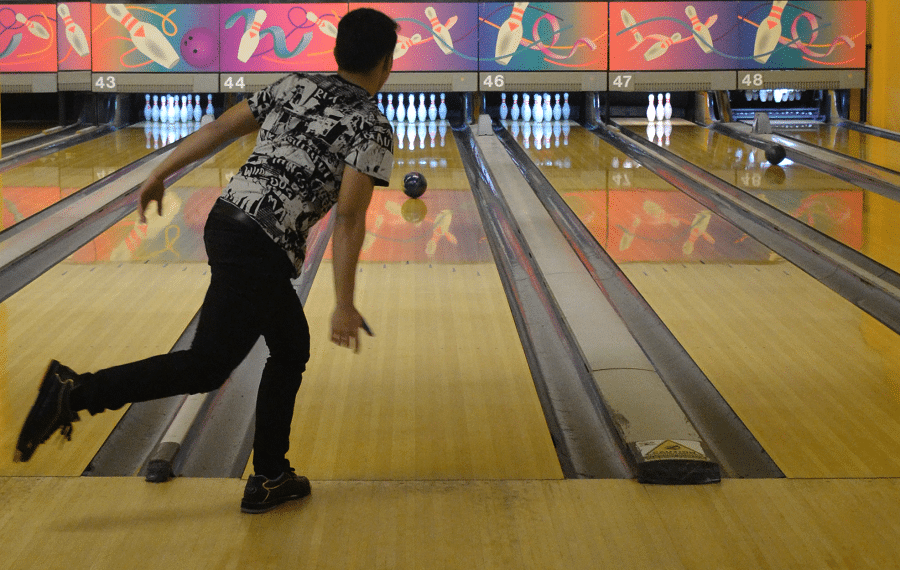
Yes, bowling can cause a rotator cuff tear. This may happen if you don't use proper bowling techniques or have an underlying injury in your shoulder.
You may also experience shoulder pain after bowling if the weight of your ball is too much or if you throw the ball with too much force.
To reduce the risk of having a rotational cuff tear when bowling:
- Avoid gripping the ball too tightly.
- Practice regularly to master proper bowling techniques.
- Avoid throwing the ball too hard.
- Avoid heavy bowling balls.
- Wear a supportive shoulder brace.
How to Prevent a Torn Rotator Cuff While Bowling
To prevent a rotator cuff tear when bowling, you need to do the following:
- Warm up your muscles with some light exercises and stretching before bowling.
- Maintain good form when bowling to avoid stressing your shoulder.
- Take regular breaks between games to rest your shoulder and avoid overuse injuries.
- Use a ball that is of appropriate weight for your strength and size.
- Improve your lifestyle by exercising regularly, eating healthy meals, and quitting smoking.
Types of Rotator Cuff Tears
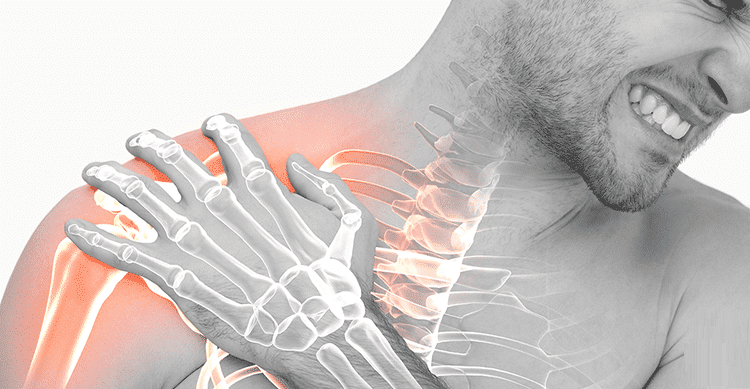
These are the two types of rotator cuff tears:
Partial tear: A partial tear involves damage to the rotator cuff, but the tear does not completely sever the tendon.
Complete tear: A complete or full-thickness tear involves a complete rupture of the rotator cuff tendon.
Pro Tip!
A rotator cuff tear mainly occurs on your dominant side; if it happens, there is a high chance you'll also get a tear on the opposite side.
What to Do If You Tear Your Rotator Cuff
If you experience shoulder pain after bowling, you need to seek medical attention from a healthcare professional. The medical practitioner will examine you to determine the severity of your injury.
If the injury is not too bad, your doctor may recommend resting and physical therapy to help strengthen muscles around your rotator cuff. However, if the injury is deep, you may undergo a surgical procedure to repair the tear.
Other treatment options include:
- Applying ice to your shoulder to reduce pain and inflammation.
- Getting over-the-counter pain relievers to help to manage pain and reduce inflammation.
- Doing shoulder stretches such as across-the-chest, chest expansion, and seated twists to strengthen the shoulder muscles.
- Adding anti-inflammatory foods such as tomatoes, blueberries, garlic, turmeric, salmon, broccoli, raspberries, and olive oil to your diet.
Do You Need a Surgery to Fix Your Torn Rotator Cuff?
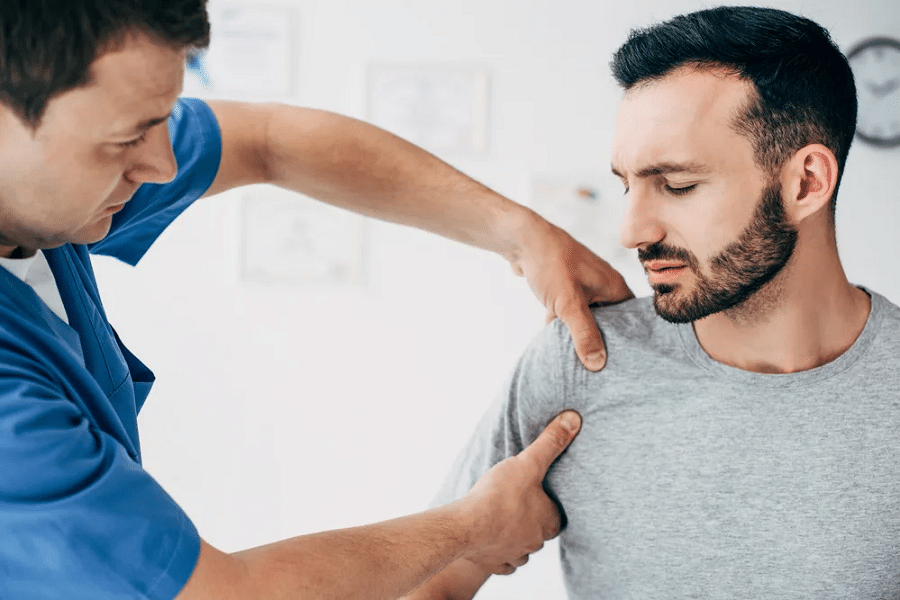
The treatment for a torn rotator cuff depends on the severity of the tear. If you have a complete tear, surgery is recommended to fix your rotator cuff. Surgical treatments for rotator cuff tears include:
1. Arthroscopic repair: This procedure involves making small incisions around the shoulder joint and using a tiny camera and specialized instruments to repair the tear.
2. Open repair: This surgical technique involves making a larger incision to access the torn tendon, then repairing it with sutures or other materials.
3. Reverse shoulder replacement: This option may be considered for more severe cases. In this procedure, the damaged parts of the shoulder joint are replaced with artificial components.
After surgery, you should wear a sling in your arm for four to six weeks.
Tests for Diagnosis
Tests taken to help diagnose your condition include:
- X-rays
- Ultrasounds
- Magnetic Resonance Imaging (MRI)
X-rays will confirm whether you have any bone-related problems, such as arthritis or bone spurs. On the other hand, MRIs and ultrasounds will confirm whether you have tendon tears.
How Long Will You Take to Recover From Torn Rotator Cuff?
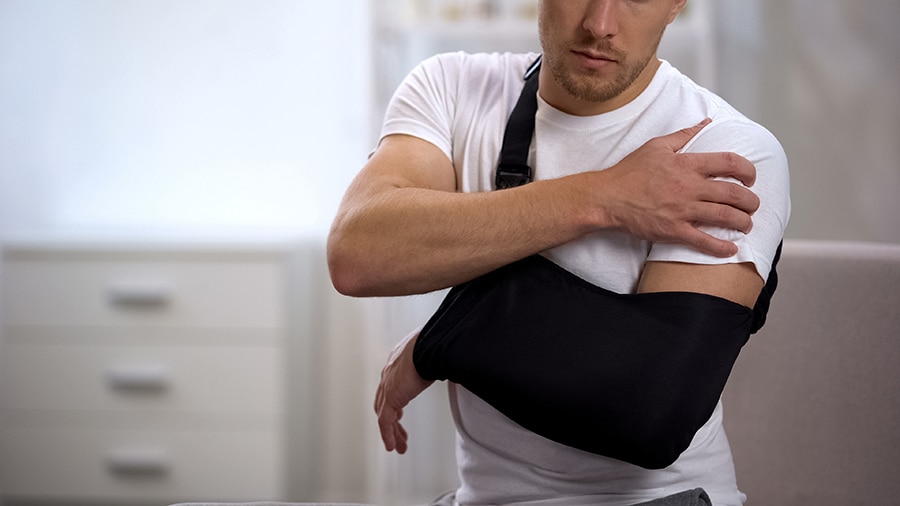
The recovery period for a torn rotator cuff can range from several weeks to about one year. Your condition's severity and treatment options will determine how long it will take before you return to the bowling alley. However, with proper treatment, you can heal from shoulder pain.
You should visit your doctor when you experience the following:
- Chronic arm and shoulder pain
- Swelling or bruising around the shoulder joint
- Shoulder or arm weakness
- Pains that prevent you from sleeping
To Wrap Up
If you are struggling with a torn rotator cuff, you don't have to give up on bowling. The sport is certainly not without risks of injury, but with the right precautions in place and a little patience, you can return to competitive bowling once your rotator cuff has healed. Remember to seek medical attention if you feel shoulder pain after bowling.
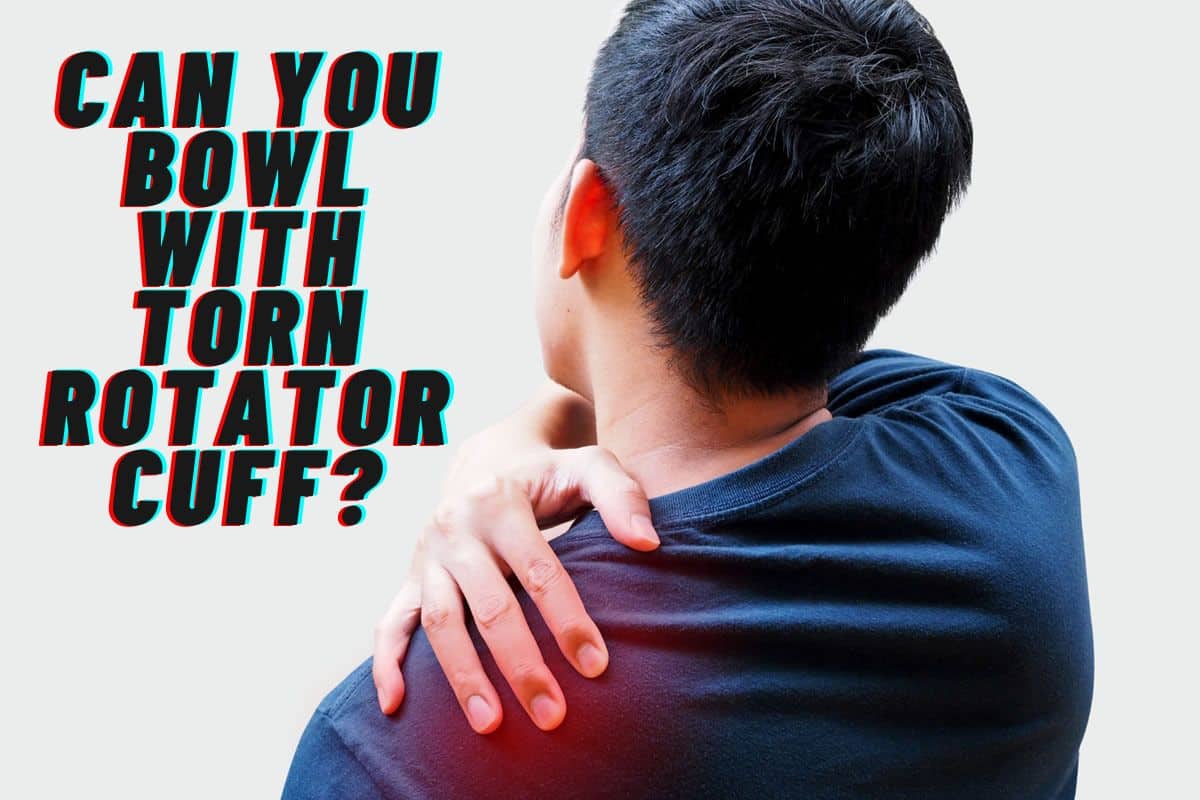
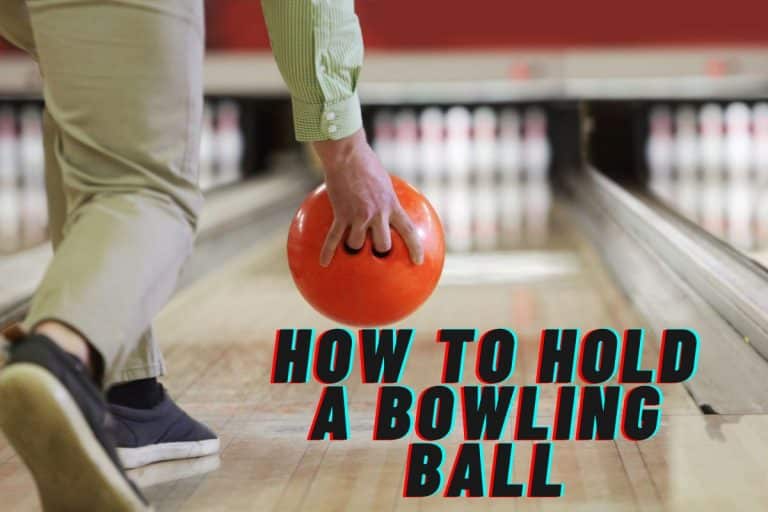
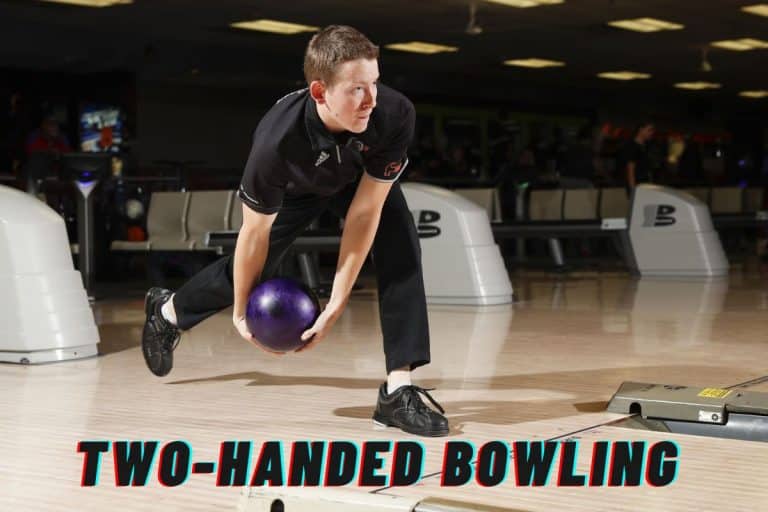
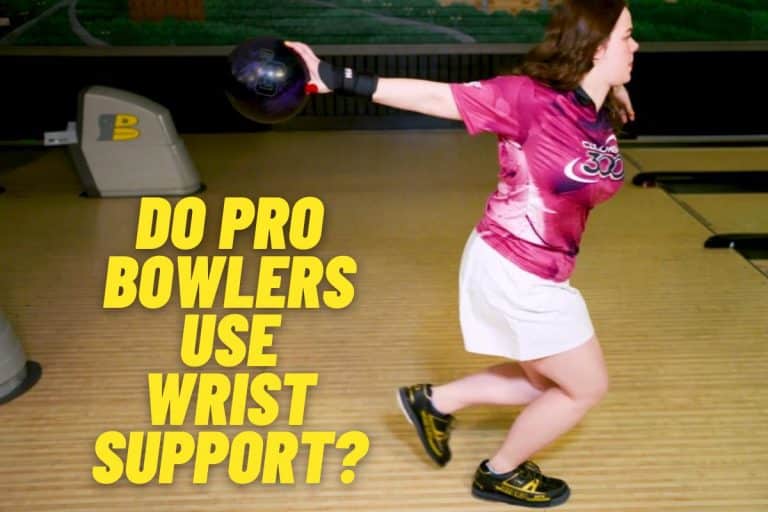
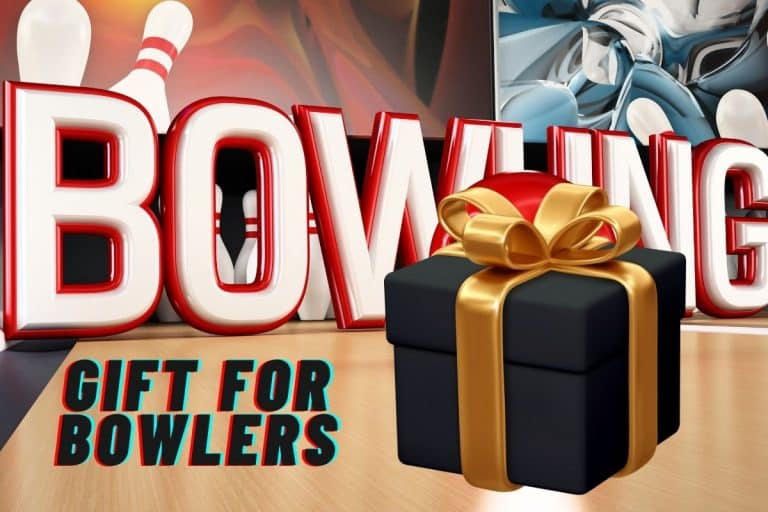
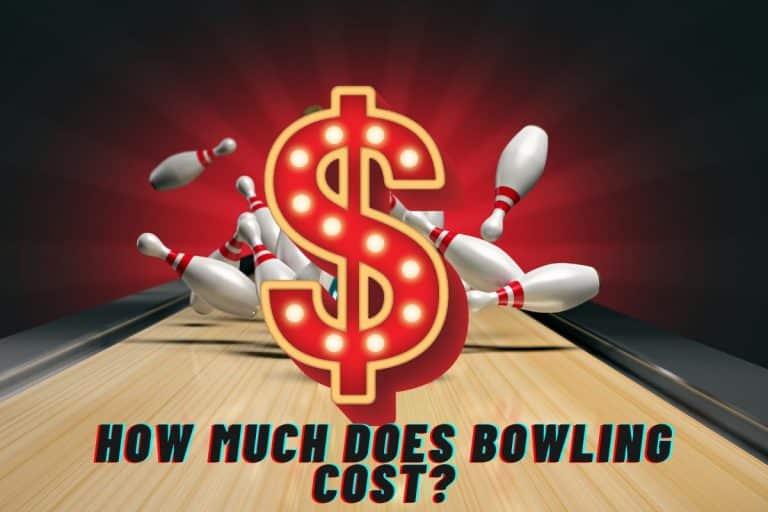
![What Is Inside a Bowling Ball? [Filler & Weight Block]](https://www.bowlingknowledge.com/wp-content/uploads/2023/02/What-Is-Inside-a-Bowling-Ball-768x512.jpg)